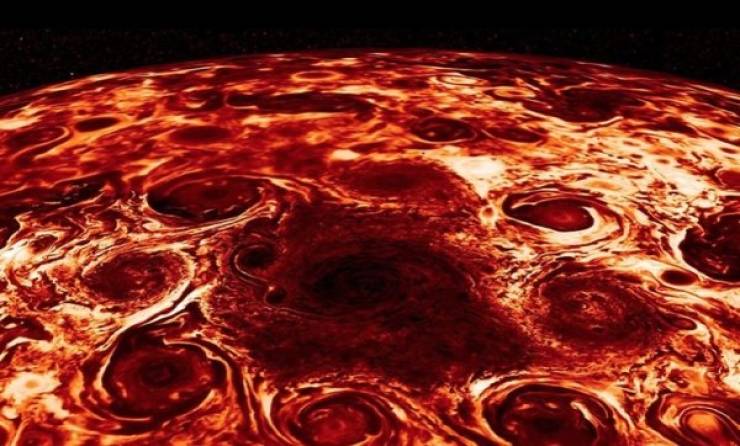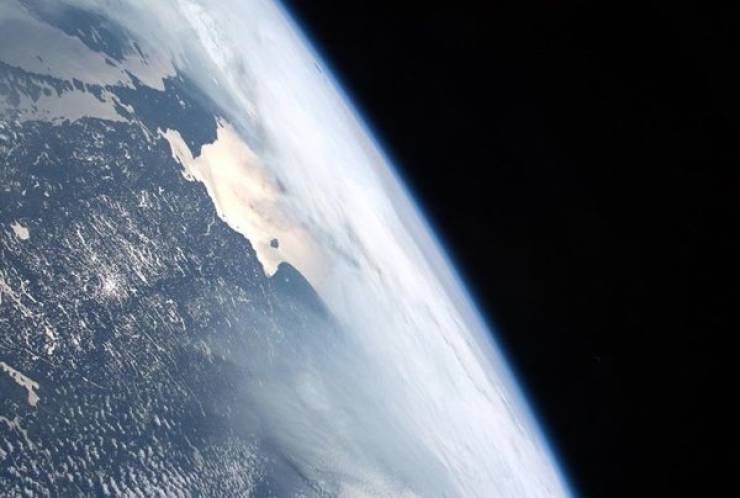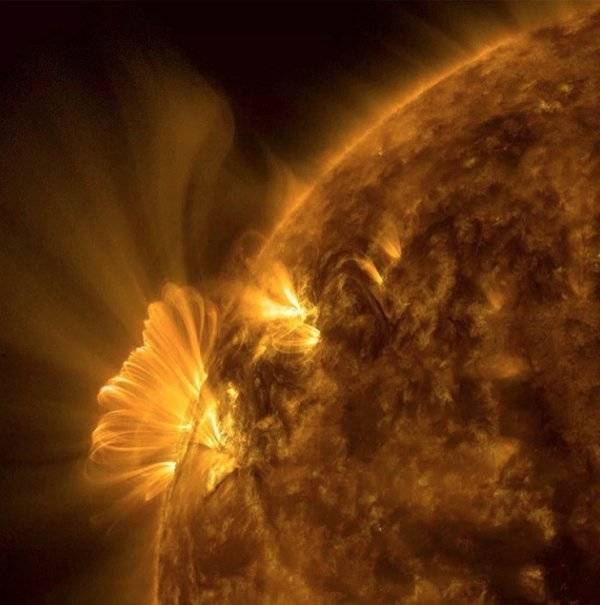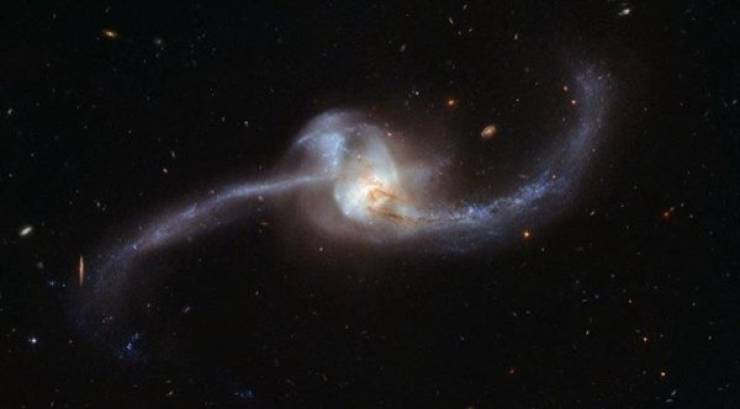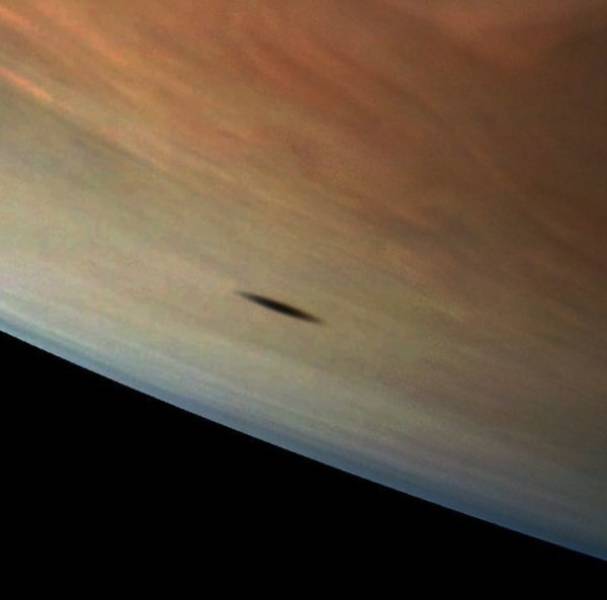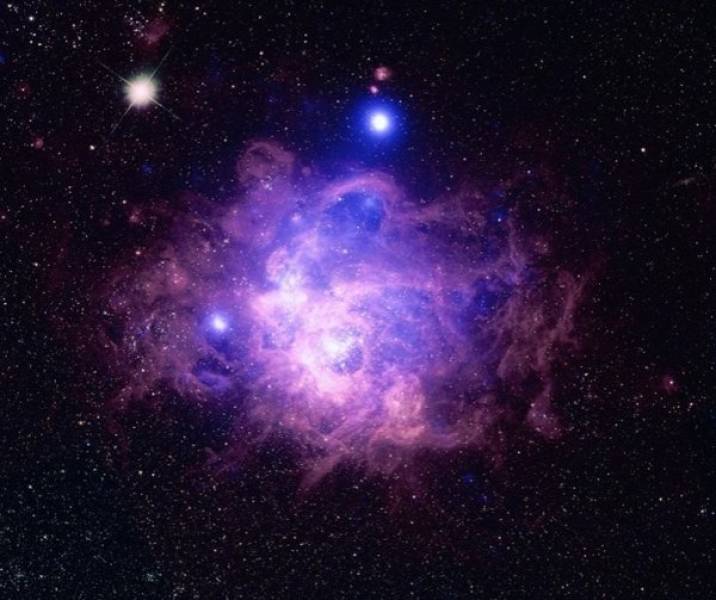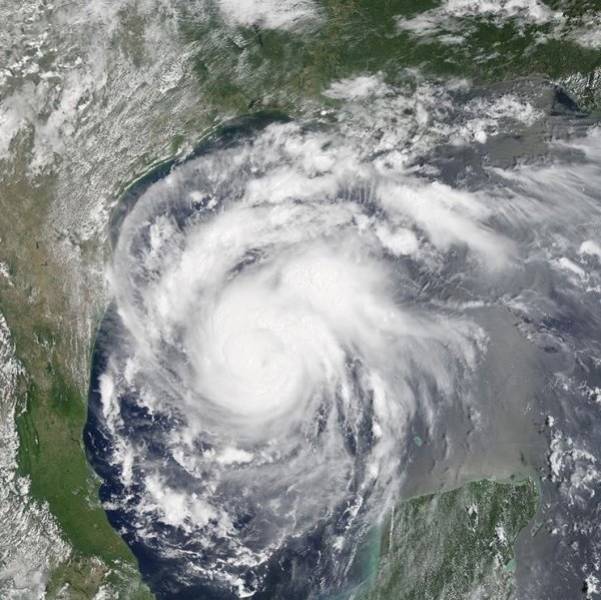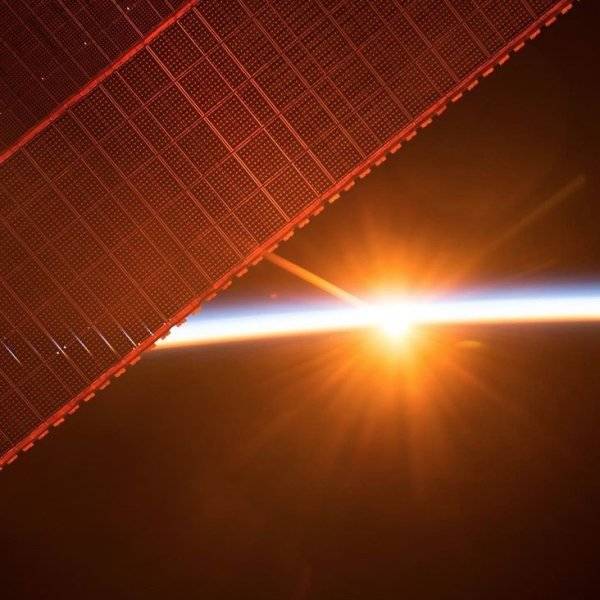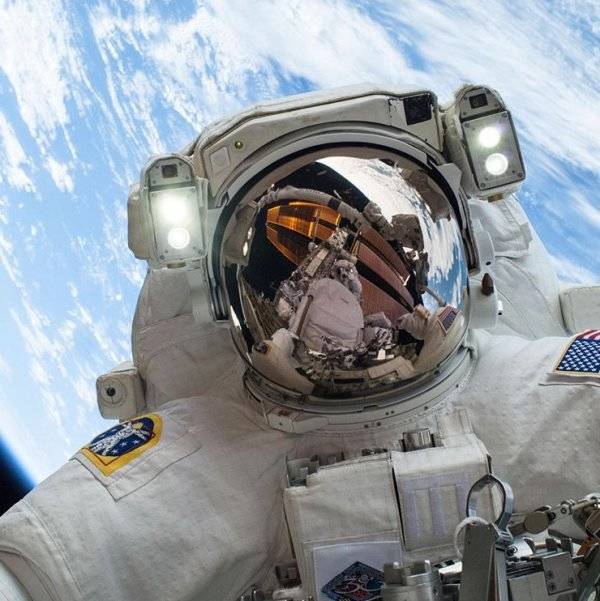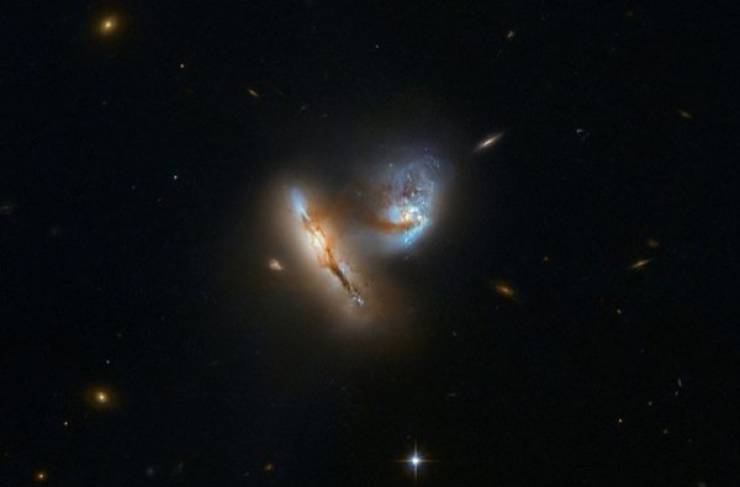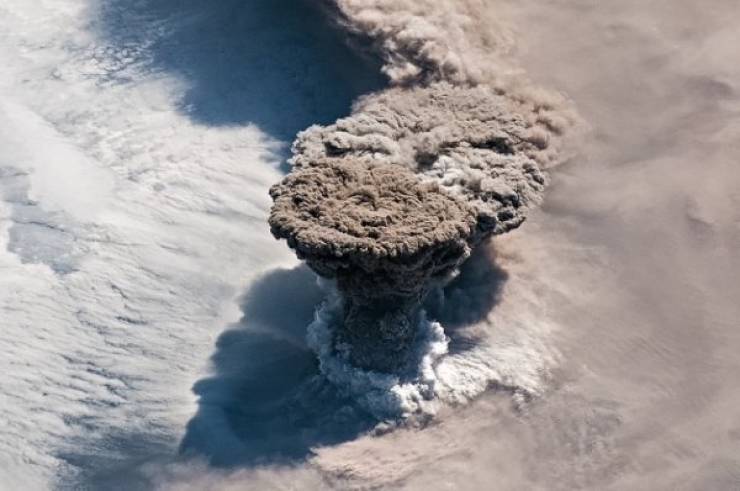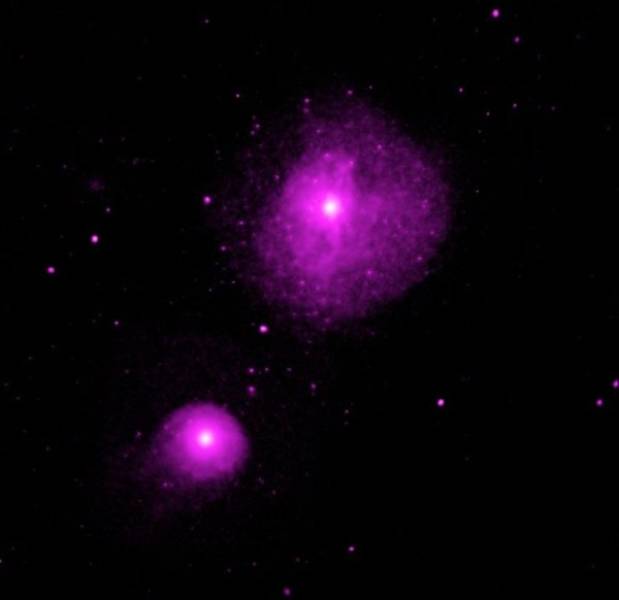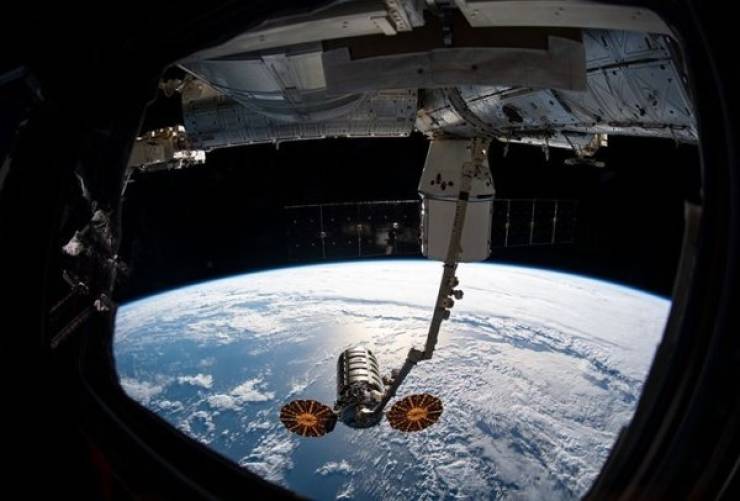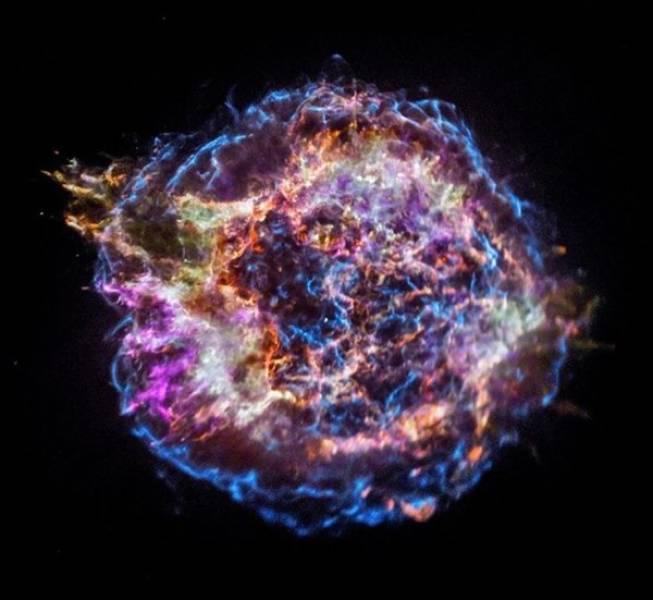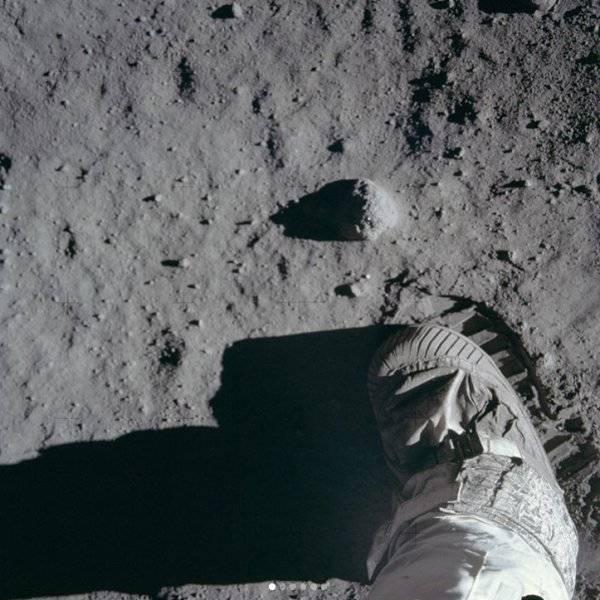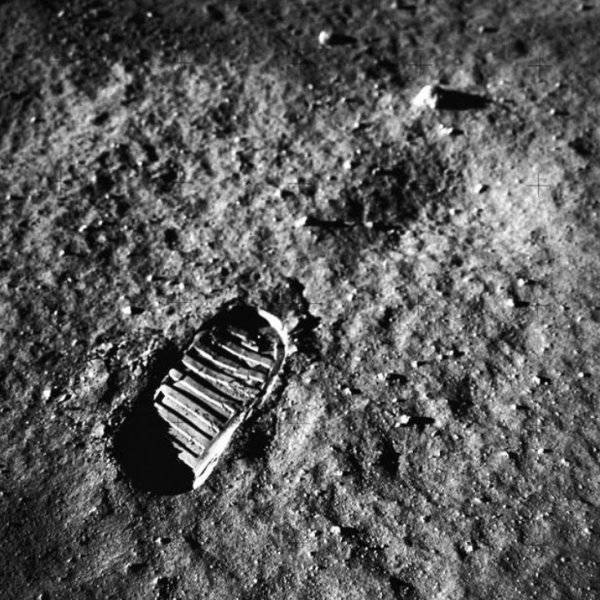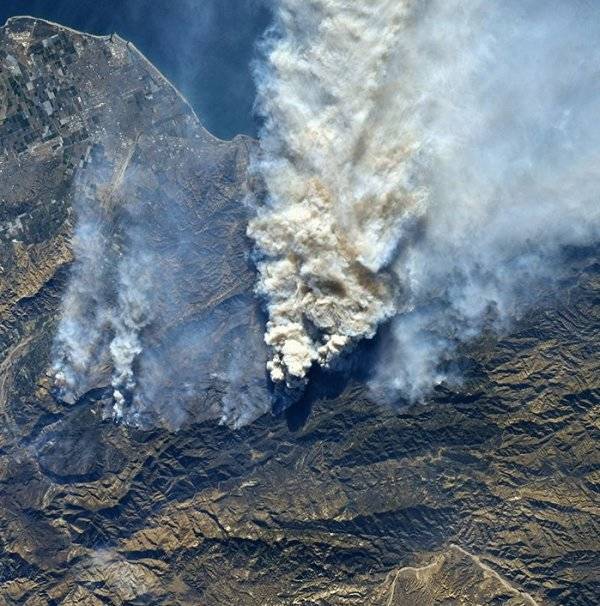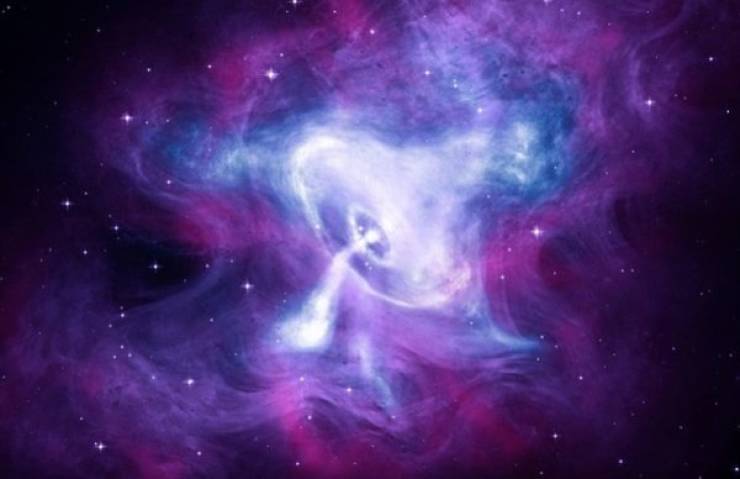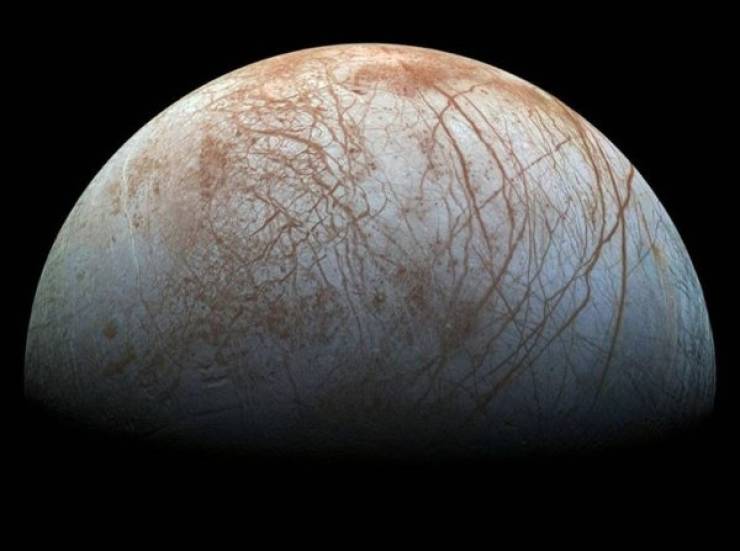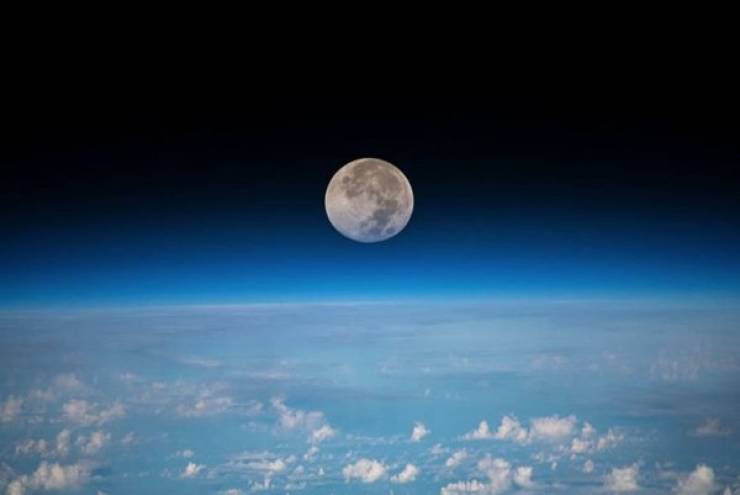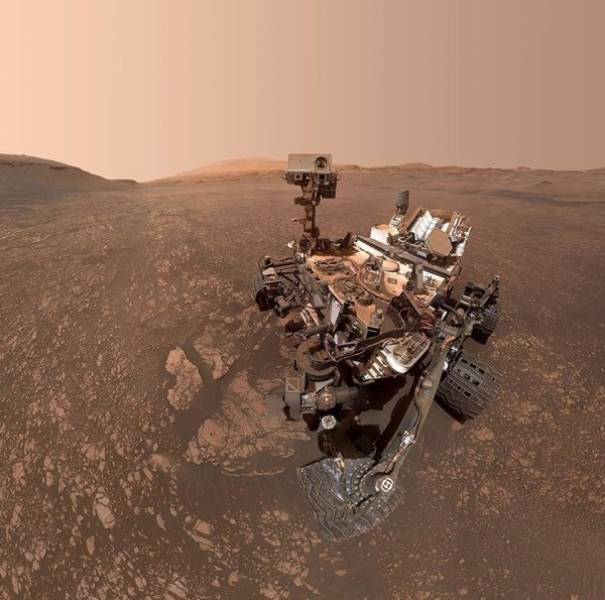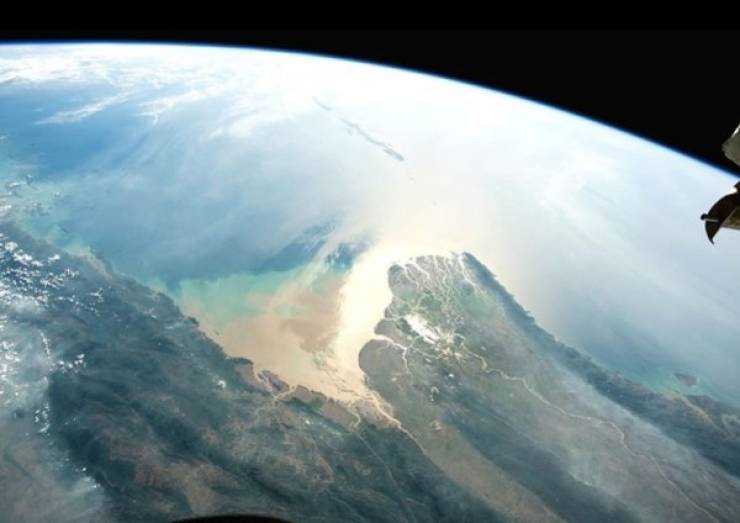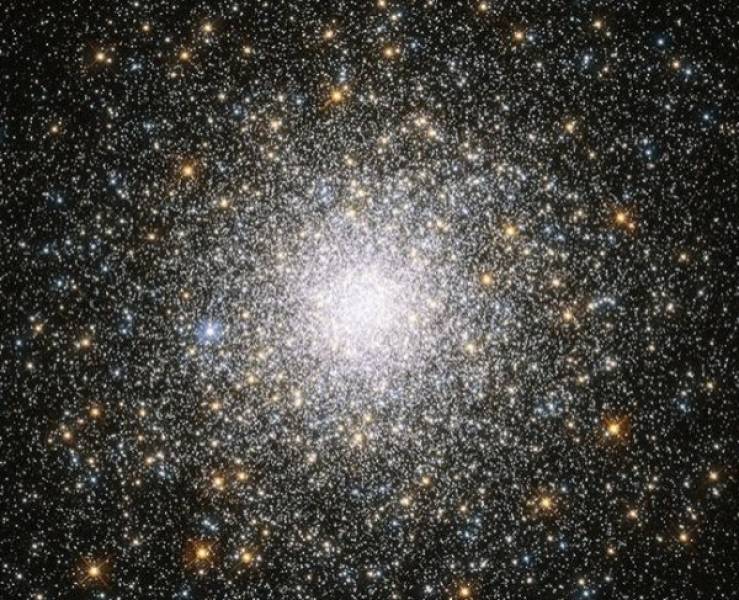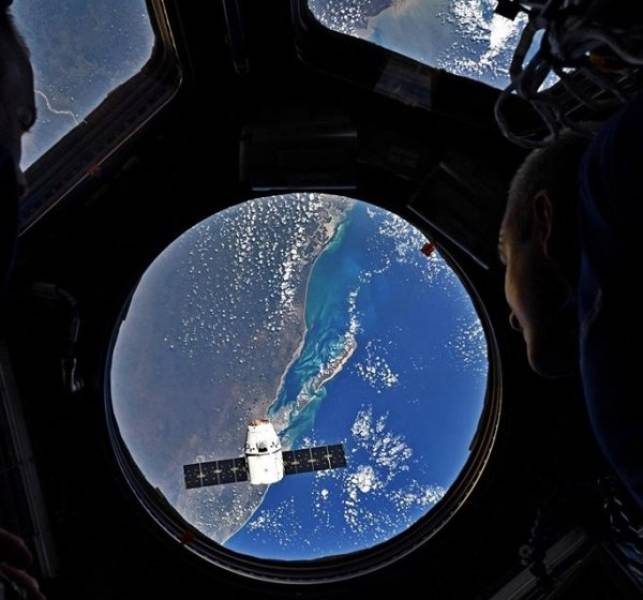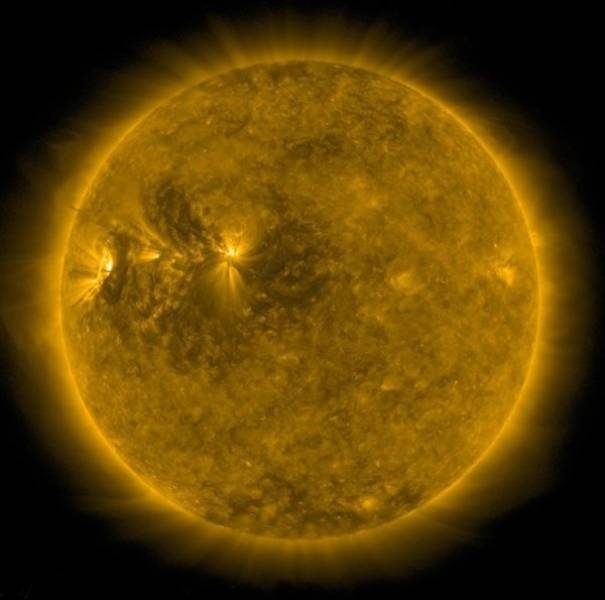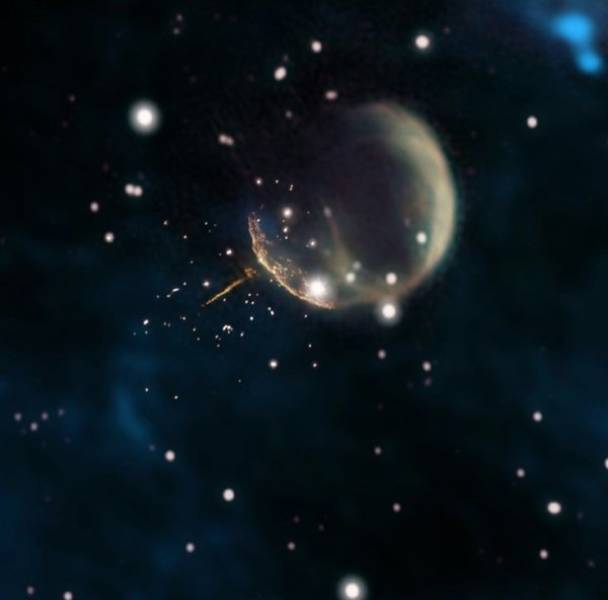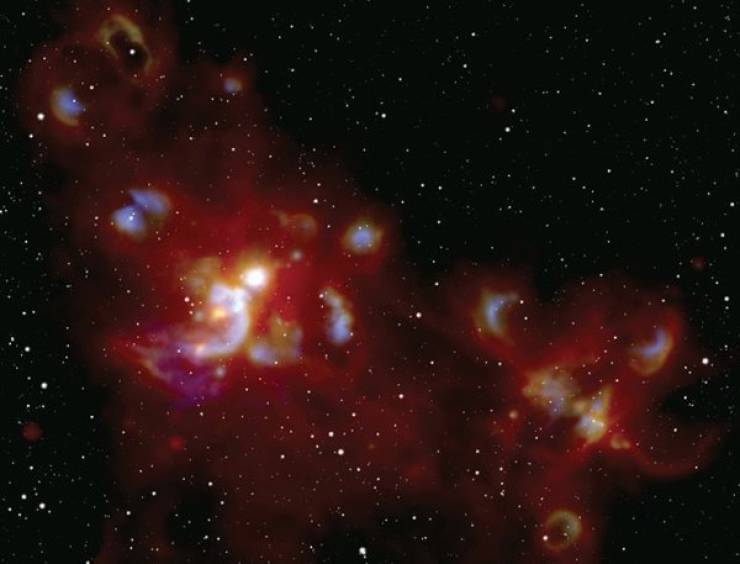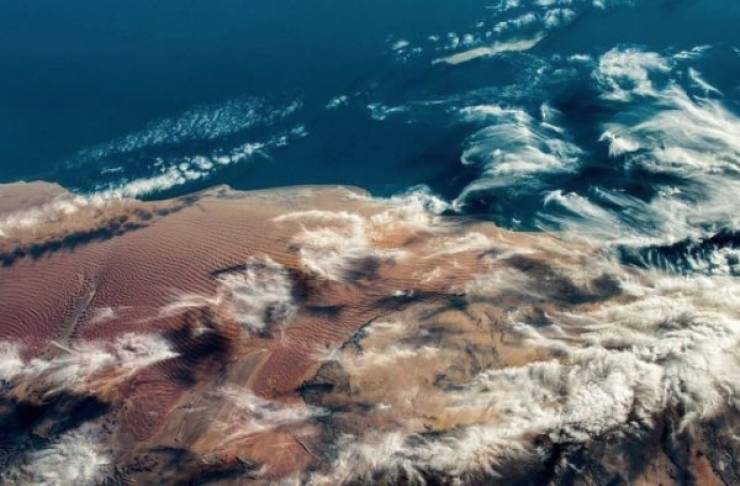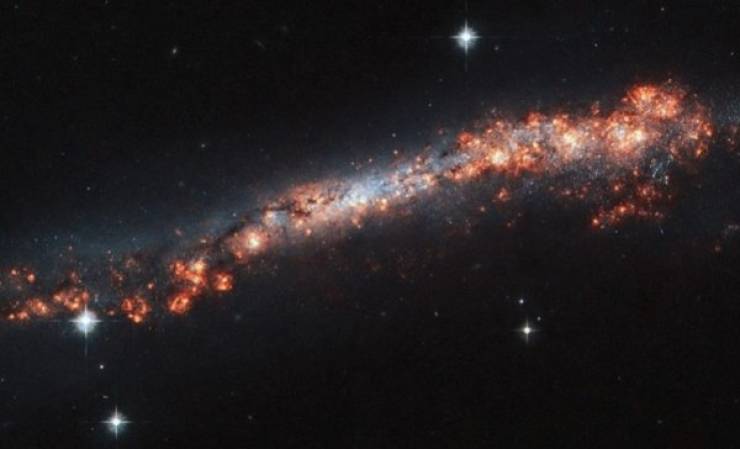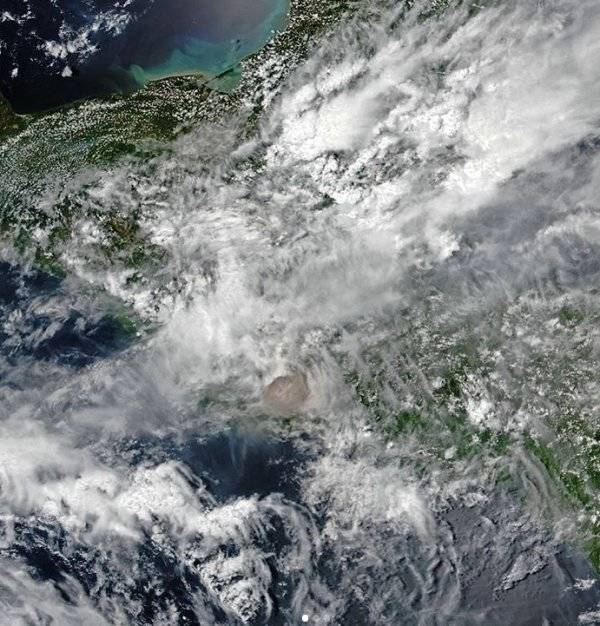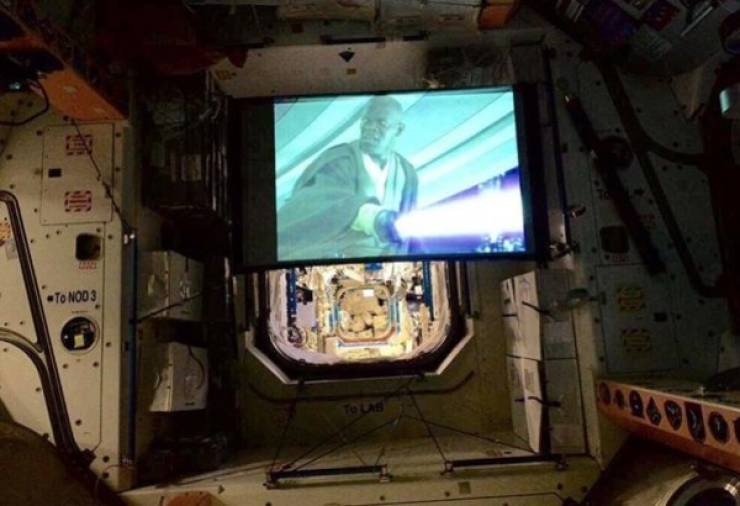“This composite photo from our Juno Mission to Jupiter shows the central cyclone at the planet’s north pole and the eight cyclones that encircle it.”
“Astronaut Nick Hague captures the sun glinting off our beautiful Earth while aboard the International Space Station.”
“An active region that had just rotated into view blasted out a coronal mass ejection, which was immediately followed by a bright series of post-coronal loops seeking to reorganize that region’s magnetic field.”
“This celestial object gained its unusual and distinctive shape as the result of a major collision and subsequent merger between two separate galaxies. This violent encounter caused clouds of gas within the two galaxies to become compressed and stirred up, in turn triggering a sharp spike of star formation. ”
“Jupiter’s moon Amalthea casts a shadow on the gas giant planet in this image captured by our Juno spacecraft.”
“A nearby galaxy contains a star-forming region where some 200 hot, young, massive stars reside. The cool dust and warmer gas in this stellar nursery appear as the wispy structures in an optical image from the NASA Hubble Space Telescope. In between these filaments are giant voids that are filled with hot, X-ray-emitting gas, seen by the NASA Chandra X-Ray Observatory. Chandra’s X-ray data (blue) are combined in this image with optical data from Hubble (purple). Astronomers think these bubbles are being blown off the surfaces of the young and massive stars throughout this star-forming region. ”
“From the vantage point of space, our Earth-observing satellites captured this image of Hurricane Harvey intensifying in the Gulf of Mexico in 2017.”
“Sixteen sunrises a day! That’s what you get aboard the International Space Station. In this image, sunrise peeks through the station’s solar-arrays, which generate power for the station and its more than 250 experiments.”
“An iconic selfie taken by a NASA astronaut on orbit.”
“These two galaxies are seen by our NASA Hubble telescope as their mutual gravitational attraction is pulling them closer and closer together and distorting their shapes in the process. Over time, the two will likely merge into one.”
“On June 22, 2019, in a series of unexpected blasts, the Raikoke Volcano in the Kurl Islands ended its 90 year dormancy streak – erupting a vast plume of ash and volcanic gases from its 700-meter-wide crater. Astronauts aboard the International Space Station captured this spectacular moment. ”
“Data from NASA Chandra X-Ray is revealing that pairs of stars are being kicked out of their host galaxies. When a neutron star forms, the core of the star collapses onto itself and explodes as a supernova. Sometimes, the recoil effect will expel it from its own galaxy — with whatever companion star is orbiting it. ”
“A Spacecraft Duo! The Northrop Grumman Cygnus and Space X Dragon spacecrafts are seen in this view from the International Space Station.”
“A new Chandra X-ray Observatory image captures the location of several vital elements like silicon (red), sulfur (yellow), calcium (green) and iron (purple), located on Cassiopeia A – a supernova remnant ~11,000 light years from Earth. ”
“50 years ago, Apollo 11 took that one giant leap – making history for all of mankind.”
“We are preparing to send humans to the Moon again in the next 5 years with our Artemis program. This time, we won’t go alone, and the Moon is no longer the final destination. We will make the journey with government, industry, and international partners in a global effort to build and test the systems needed for sending astronauts on challenging missions to Mars and beyond.”
“That bright dot in the bottom left is our sister planet Venus hovering over the serene, blue glow of Earth’s atmosphere.”
“A photo of the massive wildfires in southern California on December 7, 2017.”
“This new composite image of the Crab Nebula uses data from our Hubble, Chandra, and Spitzer space telescopes and gives new insights to this celestial object.”
“Taken by our Galileo spacecraft in the late 1990s, this image shows the puzzling, fascinating surface of Europa. Long, linear cracks and ridges crisscross the surface, interrupted by regions of disrupted terrain where the surface ice crust has been broken up and re-frozen into new patterns.”
“Under the Artemis program, we’re sending the first woman and the next man to walk on your surface by 2024. ”
“Born from clouds of dust & scattered throughout the universe, stars connect us to the cosmos. Enjoy their shine as only seen from the International Space Station.”
“A greeting from our Mars Curiosity Rover.”
“An astronaut onboard the ISS captured this last February, focusing the camera on the 100 mile wide Irrawaddy river delta — the largest river in Burma (Myanmar).”
“Bound together by gravity, this globular cluster of stars with a luminosity of some 180,000 times the Sun, can be found gleaming on the outskirts of our own Milky Way galaxy.”
“In this breathtaking view, astronauts Nick Hague and David Saint-Jacques watch Space X’s Dragon spacecraft arrive to the International Space Station”
“Launched on February 11, 2010, the Solar Dynamics Observatory provides ultra high-definition imagery of the Sun in in detail never before possible.”
“Pulsars are superdense, rapidly spinning neutron stars left behind when a massive star explodes. This one is hurtling through space at nearly 2.5 million miles an hour — so fast it could travel the distance between Earth and the Moon in just 6 minutes.”
“The SOFIA telescope captured these massive stars, many times larger than our Sun, that can affect the formation of their stellar siblings by releasing astronomical amounts of energy.”
“’Not many artists in this world are as creative as Mother Nature,’ says European astronaut Alexander Gerst who captured this image of the west coast of southern Africa.”
“This long luminous streak is actually a spiral galaxy like our Milky Way. Because observatories like NASA Hubble have seen spiral galaxies at every kind of orientation, astronomers can tell when we’ve caught one from the side. We see this galaxy, named NGC 3432, oriented directly edge-on to us from our vantage point on Earth.”
“One of Central America’s most active volcanoes – Feugo – produced an explosive eruption on June 3, 2018 that sent ash billowing thousands of meters into the air as seen in the image.”
“The Whirlpool galaxy is a pair of galaxies tugging and distorting each other through their own mutual gravitational attraction.”
“When four giant galaxy clusters collide, the aftermath reveals brilliant magenta swirls of hot gas from optical and radio data. At a distance of about 3.5 billion light years, this system is dubbed “Pandora’s Cluster” by astronomers because of all of the different structures found within it. ”
And lastly…
“We have a little bias, but we can’t think of a better place to watch Star Wars than the International Space Station, which orbits our planet from 250 miles above at 17,500mph.”

